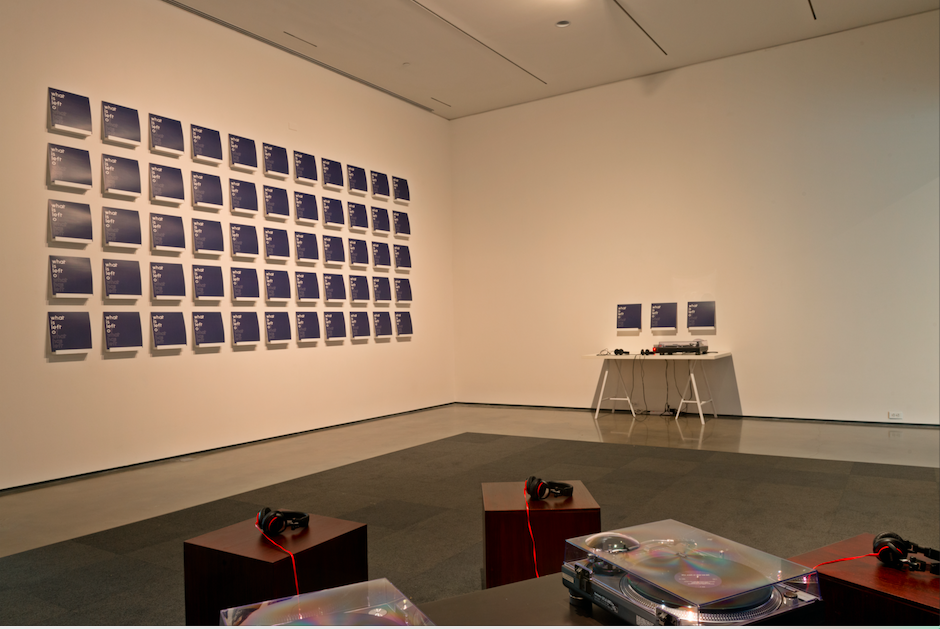what is left of what has left
Hessel Museum of Art, Center for Curatorial Studies, Bard College
8- 29 May 2016
John Akomfrah and Trevor Mathison, DJ/rupture, Tony Cokes, Em’kal Eyongakpa, Lamin Fofana, and Val Jeanty
Photo: Chris Kendall
Hessel Museum of Art, Center for Curatorial Studies, Bard College
8- 29 May 2016
John Akomfrah and Trevor Mathison, DJ/rupture, Tony Cokes, Em’kal Eyongakpa, Lamin Fofana, and Val Jeanty
Photo: Chris Kendall




what is left of what has left takes the form of a 12-inch vinyl record album comprised of works by artists, DJs and musicians. Constituting a meeting place of voices, ideas and propositions, the record brings together works that bear witness to various modalities of black sonic and cultural formations from within the contemporary African diaspora. The record draws upon rapidly evolving sonic lineages to explore the rupture and mutation of sound and music over time and space– through histories of migration and displacement, as well as through the use of vocoders, samplers, synthesizers and music software appli- cations. what is left of what has left foregrounds the influence of sound on the production and shaping of social and cultural identities of African diasporas, demonstrating how the sonic comes to figure a sense of place and belonging, and our relationship with both past and present.
Here the record is employed as a vessel for contemporary narratives, echoing Paul Gilroy’s use of the chronotope to denote the image of the ship moving across the black Atlantic. In this way, the record can be thought of as a spatio-temporal matrix, “a micro-cultural, micro-political system in motion” by which di erent artistic and cultural practitioners converge. Works by John Akomfrah and Trevor Mathison, Tony Cokes, DJ/rupture, Em’kal Eyongakpa, Lamin Fofana, and Val Jeanty address cultural dislocations, migrations and transnational flows through sonic and musical experimentation marked by reverb, delay, subtraction, digital sampling and modulation. These polyphonic and hybrid fragments reveal the complex- ity of subjectivities constructed by global social, economic and cultural exchanges.
Produced by Bhavisha Panchia as part of the requirements for the Masters of Arts degree at the Center for Curatorial Studies, Bard College, May 8–29, 2016
Edition: 250
